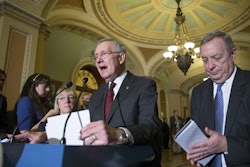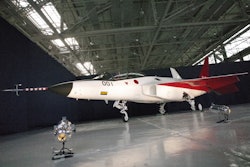TORNILLO, Texas (AP) — An international bridge over the Rio Grande near El Paso opened for the first time Thursday after years of construction delays, giving officials hope it would be a boon for Texas-Mexico border commerce.
Mexican President Enrique Pena Nieto joined U.S. officials Thursday to dedicate the Tornillo-Guadalupe Port of Entry and International Bridge. The bridge in a rural area about 30 miles downstream from El Paso replaces the narrow 77-year-old Fabens-Caseta international bridge about 650 yards away.
In remarks, Pena Nieto noted incendiary remarks by some U.S. conservatives about security along the U.S.-Mexico border. "The path for North American cannot be built on fear, resentment or false accusations. North America's path must be built on the basis of trust, openness and integration," he said.
The countries of North America should "make trade and the movement of people easier, and we should continue consolidating a strong, dynamic and innovative regional economy," he added.
U.S. Homeland Security Secretary Jeh Johnson shared the hope that the bridge will forge stronger trade ties between the United States and Mexico.
"Cross-border trade remains a critical part of our bilateral relationship, and we will continue to collaborate with our Mexican counterparts to build the necessary infrastructure to facilitate lawful trade along our southwest border," he said.
Planners hoped the $96 million undertaking would spark an economic boom and attract manufacturing plants and long lines of trucks to a now-remote region southeast of two congested crossings between Ciudad Juarez, Mexico, and El Paso. But after a ceremonial groundbreaking in 2011, construction was stymied by a lack of Mexican government funding.






















